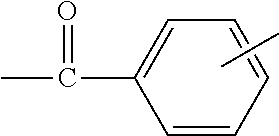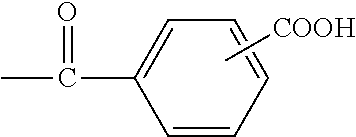Dilutable concentrated cleaning composition
a concentrated cleaning and composition technology, applied in the direction of ampholytes/electroneutral surface active compounds, detergent compositions, surface-active detergent compositions, etc., can solve the problems of preserving composition, too low concentration of preservative in the diluted form, and too low level of preservative to preserve the diluted composition
- Summary
- Abstract
- Description
- Claims
- Application Information
AI Technical Summary
Benefits of technology
Problems solved by technology
Method used
Image
Examples
examples
[0091]The following examples illustrate a composition of the invention. Unless otherwise specified, all percentages are by weight. The exemplified composition is illustrative only and does no limit the scope of the invention. Unless otherwise specified, the proportions in the examples and elsewhere in the specification are by active weight. The active weight of a material is the weight of the material itself excluding water or other materials that may be present in the supplied form of the material.
examples 1 to 3
[0092]In accordance with Examples 1 to 3, the compositions shown in Table 1 are examples of formulas in accordance with the invention which exhibit acceptable viscosity, i.e. greater than 80 mPas, both when formulated and when diluted at up to 3-fold and even up to 5-fold dilution. The dilution value is calculated so that, for example, 2-fold dilution means that the initial volume of the undiluted composition is mixed with an equal quantity of water so that the total volume is twice the initial volume of the undiluted composition, and therefore the initial volume is one half of the final diluted composition.
[0093]In Table 1, and subsequent tables, the following components are identified:[0094]NH4AEOS—an anionic surfactant, in particular a fatty acid ethoxylate sulfate, in particular ammonium C12-C15 alkyl ethoxysulfate with 1.3 ethoxylate groups per molecule, most particularly ammonium laureth sulfate (Made in house at 58.5% A.I. and containing 18.9 weight % ethanol or at 70% A.I., ...
PUM
| Property | Measurement | Unit |
|---|---|---|
| diameter | aaaaa | aaaaa |
| pH | aaaaa | aaaaa |
| pH | aaaaa | aaaaa |
Abstract
Description
Claims
Application Information
 Login to View More
Login to View More - R&D
- Intellectual Property
- Life Sciences
- Materials
- Tech Scout
- Unparalleled Data Quality
- Higher Quality Content
- 60% Fewer Hallucinations
Browse by: Latest US Patents, China's latest patents, Technical Efficacy Thesaurus, Application Domain, Technology Topic, Popular Technical Reports.
© 2025 PatSnap. All rights reserved.Legal|Privacy policy|Modern Slavery Act Transparency Statement|Sitemap|About US| Contact US: help@patsnap.com



